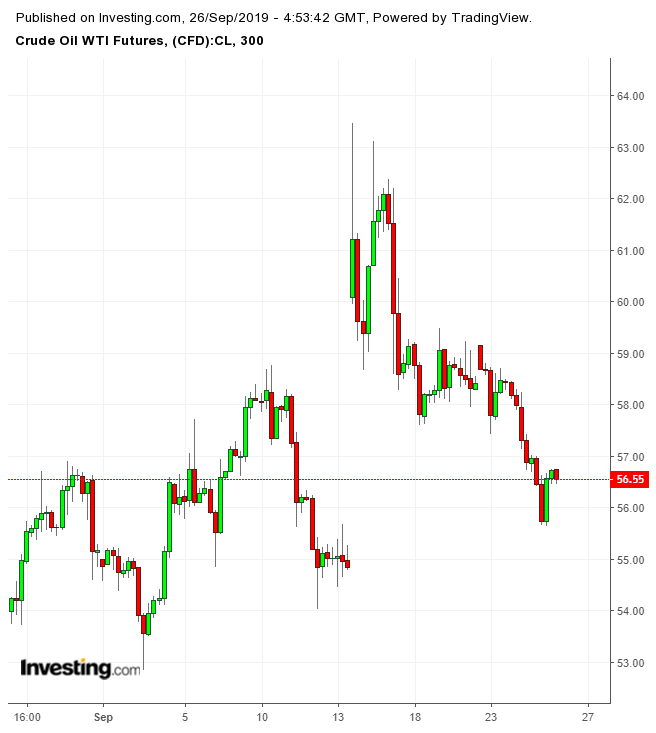Following the Sep. 14 attack on Saudi oil infrastructure, we saw the oil market jump on Monday. Since then, prices have been returning to pre-attack levels.
While a chorus of talking heads can be heard complaining that the market isn’t factoring in the chance of war or other geopolitical conflicts impacting Saudi oil, the math tells a different story. In fact, the market is likely much more in line with the threats than some pundits believe.

When examining the potential damage from a possible event, like war, we must attempt to identify the expected value. To do this, we consider both the probability of such an event occurring and the extent it would damage the global oil supply in terms of barrels per day (bpd) lost.
The expected value loss of oil to the global supply is the product of these two variables: the chance of an event happening and bpd that would be lost if it did occur.
Here's the math:
t = chance of event
b = barrels per day lost (in case of that event)
EV = expected value
t*b = EV
Let’s take a look at three examples, keeping in mind that I am not endorsing these specific assumptions. They're for illustration purposes only:
Scenario 1
Assume there is a 10% chance of an all-out war between Iran and Saudi Arabia that takes 10 million bpd of Gulf oil out of the global supply.
0.10*10=1 million bpd
In such an case, the expected value is a loss of 1 million barrels per day. If a hedge fund in New York or London has decided there’s a 10% chance of war which would take 10 million bpd off the market, that fund is therefore expecting 1 million bpd to come off the market. That's not very much in today’s market.
It must be understood that in this scenario, if a war did eventually start, the expected value would have to be recalculated with a 100% chance of war. That means the expected loss would change to 10 million bpd and that fund would look for higher prices.
Scenario 2
Assume there is a 50% chance of a military incident that knocks out 6 million bpd. The expected value is a loss of 3 million bpd. If the fund believes that these variables are correct, they'll price in a 3 million bpd expected loss.
Again, if war did eventually start, the expected loss would be recalculated to 6.
Scenario 3
Here's a more complicated example: there is a 10% chance that 10 million bpd could come off the market and a 50% chance that 6 million bpd could come off the market and a 75% chance that 1 million bpd would come off the market.
In this case, the fund would calculate that the expected loss is 4.75 million bpd. If the fund believed in these assumptions, it would put this expected value into its projections. (This particular scenario is more complicated because each portion of the calculation may be dependent on the others, but the above calculation is simplified for clarity.)
Two complications to note: first, we have to understand that in the case of a full-scale war in the Persian Gulf, there could be hysteria among oil traders that would drive prices higher than the fundamentals require. The resulting panic-induced spike might be short lived.
Second, if this oil were to come off the market for a long duration, there is additional spare capacity in the world to make up for its loss. For instance, other OPEC members can increase production, especially after an emergency meeting. North America as well might be able to increase production, especially with additional capital from Wall Street.
Finally, several countries, including China and the United States, have significant amounts of stored oil which they can access to counteract rising prices.
Expected Current Market Value
While the above is admittedly a simplistic overview of how expected value would be used by a sophisticated fund that trades in oil, the point remains the same. The market has likely already priced in the expected value of different possible conflicts. Right now, the expected values do not warrant massive price increases.
Note: Aramco is expected to provide an update on its progress recovering from the attacks on 30 September (Monday).
